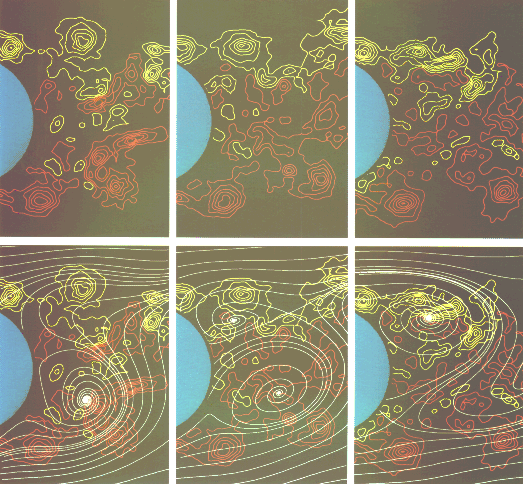You are here
Home ›Modulated formation of Kelvin-Helmholtz and Kármán vortices in the near-wake of a cylinder.
Modulated formation of Kelvin-Helmholtz and Kármán vortices in the near-wake of a cylinder. Excitation of a cylinder in the cross-stream direction at a frequency corresponding to the inherent Kelvin-Helmholtz instability instability of the separating shear layers generates the instantaneous positive (red) and negative (yellow) vorticity contours shown in the top row of images taken during the first, fourth and seventh cycles of cylinder oscillation, i.e. N = 1, 4, and 7. The oscillation amplitude, A = 0.016D, where D is the cylinder diameter, is relatively small, yet pronounced small-scale (Kelvin-Helmholtz) vortices are induced immediately downstream of separation. The first vortices formed from the top and bottom surfaces of the cylinder are similar at N = 1 and 7, whereas they are distinctly different at N = 4. Filtering the instantaneous velocity fields allows construction of (white) streamline patterns that indicate the large-scale Kármán vortices in the bottom row of images. The large transverse undulation of the wake at N = 4 is far in excess of the small amplitude of the cylinder perturbation. The small-scale vortices therefore exhibit a modulated pattern that is repetitive at the Kármán period, which in turn has a major influence on the Kármán vortex formation. Re = 5,000. [1]

